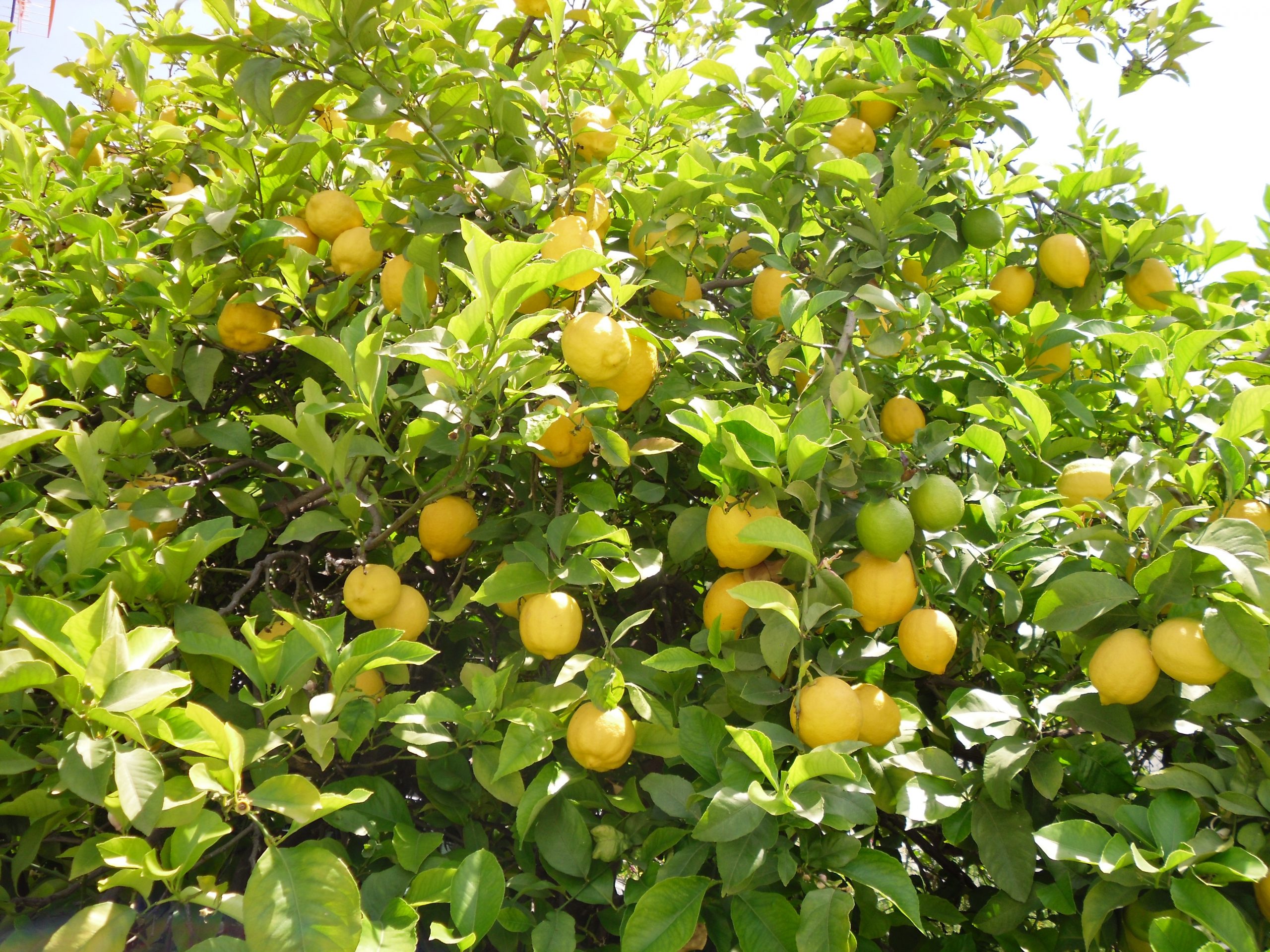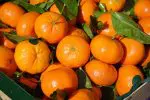This post contains affiliate links. If you buy something from one of our links we may earn a commission. Thanks

Meyer lemon trees are a popular choice for indoor growers due to their small size and sweet, juicy citrus fruits. However, proper care is essential to ensure that your Meyer lemon tree thrives indoors.
Meyer lemon tree indoor care involves placing the plant in a location with plenty of sunlight, ideally a south-facing window. Use well-draining soil in a pot with drainage holes. Water when the top inch of soil is dry and fertilize with citrus-specific food every 6-8 weeks.
In this blog, we will cover the basics of Meyer lemon tree indoor care, including watering, fertilizing, pruning, and dealing with common pests and diseases.
By following these guidelines, you can enjoy the delicious fruit and vibrant foliage of your Meyer lemon tree for years to come. But first:
What Is A Meyer Lemon?
A Meyer lemon is a type of lemon that is smaller and rounder than a regular lemon, with a thin, delicate skin that is yellow-orange in color when ripe.
It is a cross between a lemon and a mandarin orange and has a sweeter, less acidic flavor than a regular lemon.
Meyer lemons are often used in cooking and baking because of their unique flavor, and they are also used to make a variety of products such as lemon marmalade and lemon-scented cleaning products.
Citrus × meyeri, the Meyer lemon is a hybrid citrus fruit native to China. It is a cross between a citron and a mandarin/pomelo hybrid.
Mature trees are around 6 to 10 ft (2 to 3 m) tall with dark green shiny leaves. The flowers are white with a purple base and are fragrant. The fruit is rounder than a true lemon, deep yellow with a slight orange tint when ripe, and has a sweeter, less acidic flavor. https://en.wikipedia.org/wiki/Meyer_lemon
Originally from China, these trees were introduced to the United States in 1908 and have since become a beloved backyard and indoor plant.
Not only does an indoor lemon tree add a decorative touch to your home, but they also provide the added bonus of fresh lemons right at your fingertips saving you trips to the grocery store.
 If this is your first Meyer lemon tree I recommend finding a dwarf Meyer lemon tree.
If this is your first Meyer lemon tree I recommend finding a dwarf Meyer lemon tree.
A dwarf variety will need less pruning and may even fruit sooner.
In this blog post, we will go over the necessary steps for caring for a Meyer lemon tree indoors, from choosing the right pot and soil to dealing with common problems.
With proper care, your Meyer lemon tree can thrive and provide you with an abundance of juicy, tangy lemons.
Now let’s get started and learn about the necessary steps for caring for a Meyer lemon tree indoors.
Meyer Lemon Tree Indoor Care: A Step-by-Step Guide
Choosing the Right Pot:
When it comes to potting your Meyer lemon tree, it’s important to select a container that is large enough to allow for proper root growth. A large pot with a diameter of at least 18 inches and a depth of at least 12 inches is recommended for a small Meyer lemon tree.
It’s also essential to choose a pot with good drainage holes to prevent waterlogging and root rot. Clay pots and ceramic containers are popular choices due to their durability and ability to regulate moisture, but plastic pots can work well too.
You can place a layer of pebbles in the bottom of the pot to help drainage and prevent too much water in the soil. But be sure to empty the plant’s tray of standing water.
Repotting Meyer lemon tree
Meyer lemon trees should be repotted every 3-4 years. Choose a pot that is 25% larger than the original one.
Use fresh soil and take care not to damage the roots but do trim off any dead roots.
Choosing The Right Soil
As for soil, it’s important to choose a mix that is well-draining and has a slightly acidic pH.
A potting soil specifically formulated for citrus trees is a good choice, or you can mix equal parts peat moss, perlite, and compost for a homemade blend.
It’s also a good idea to mix in a slow-release citrus fertilizer at the time of planting to provide the necessary nutrients for your tree to thrive.
Placing Your Meyer Lemon Tree in the Right Location:
One of the most important factors for the success of an indoor Meyer lemon tree is providing it with sufficient light.
Meyer lemon trees thrive in bright, indirect sunlight, so it’s important to place your tree in a location that gets plenty of full sun but is protected from direct, hot sun.
A south or west-facing window is a good spot for bright light, as long as the tree is not too close to the glass and is protected from drafts. They need 6-8 hours of direct sunlight.
Other important considerations for caring for a Meyer lemon tree indoors include protecting it from extreme temperature fluctuations, providing adequate humidity, and regular pruning to promote healthy growth.
You may not have enough light during the winter months so you may need an LED grow light.
In the summer months, it’s a good idea to move your tree outside to a sunny spot, but be sure to bring it back inside before the temperature drops too low.
Meyer lemon trees can tolerate a wide range of temperatures, but they come from warm climates and prefer a consistent temperature between 60 and 75 degrees Fahrenheit.
Watering Your Meyer Lemon Tree:
How often should you water a Meyer lemon tree indoors? Proper watering is essential for the health and growth of your Meyer lemon tree.
It’s important to keep the soil evenly moist, but not waterlogged, and to allow the top inch or two of soil to dry out slightly between waterings.
Overwatering can lead to root rot, so it’s important to check the soil moisture level regularly and water only as needed.
In general, a Meyer lemon tree should be watered once a week, but this may vary depending on your home’s humidity levels and temperature.
A good rule of thumb is to water your tree when the top inch or two of soil feels dry to the touch. You can also use a moisture meter to help determine when to water.
It’s also a good idea to water your Meyer lemon tree at the base of the plant, rather than from above, to prevent the leaves from getting too wet and potentially developing fungal diseases.
Be sure to use lukewarm water, as cold water can shock the roots.
Overall, the key to watering a Meyer lemon tree is to keep the soil consistently moist, but not waterlogged, and to monitor the soil moisture level regularly to ensure that your tree is getting the hydration it needs.
Pruning Your Meyer Lemon
Pruning is also an important part of caring for a Meyer lemon tree. Regular pruning helps to shape the tree, remove dead or diseased branches, and encourage new growth.
It’s best to prune your tree in the early spring before the growing season begins. Use sharp, clean pruning shears to cut back any branches that are crossing or rubbing against each other, as well as any dead or damaged branches.
Be sure to remove any suckers that may appear at the base of the tree, as these are not productive and will take energy away from the main branches.
Common Meyer Lemon Tree Problems and Solutions:
Like all indoor plants, citrus plants like Meyer lemon trees can be prone to certain pests and diseases.
Some of the most common pests that affect lemon trees is the citrus mealybug and spider mites which feeds on the tree’s sap and can cause yellowing leaves and stunted growth.
To control mealybugs, you can try wiping the affected areas with rubbing alcohol on a cotton swab or applying a horticultural oil or insecticidal soap.
Another common problem is citrus greening disease, which is caused by a bacterium transmitted by a specific type of insect. Symptoms include yellowing leaves, stunted growth, and misshapen fruit.
Unfortunately, there is no cure for citrus greening disease, and infected trees will eventually die. To prevent the spread of this disease, it’s important to regularly inspect your tree for signs of infection and to control any pest populations.
Harvesting and Using Your Meyer Lemon Tree’s Fruit:
One of the best things about having a Meyer lemon tree is getting to enjoy the juicy, tangy fruit it produces.
Meyer lemons are typically smaller and sweeter than regular lemons, with thin, edible skin. You’ll know your lemons are ready to be picked when they are plump, bright yellow, and have a slightly soft texture.
Be sure to gently twist the lemon off the tree rather than pulling it, as this can cause damage to the branch.
There are so many delicious ways to use your fresh Meyer lemons. You can add them to salads, marinades, and drinks, or use them to make homemade lemonade, lemon curd, or lemon bars.
They also have a number of household uses, such as natural cleaning products and air fresheners.
Does Meyer lemon have a chilling requirement to produce fruit?
Most fruit trees like apples and pears have a chilling requirement for fruit production and Meyer lemon trees also have a certain chilling requirement in order to produce fruit.
The chilling requirement refers to the number of hours below a certain temperature (usually around 45-55 degrees Fahrenheit) that a plant needs in order to initiate flower bud development.
Meyer lemon trees require a chilling period of around 200-300 hours in order to produce fruit.
This means that indoor citrus trees need to be exposed to temperatures below 45-55 degrees Fahrenheit for a certain number of hours in order to initiate flower bud development and eventually produce fruit.
If Meyer lemon trees do not receive the necessary chilling hours, they may not produce as much fruit, or may not produce any fruit at all.
This can be a problem for those growing Meyer lemon trees in warmer climates where the temperatures do not dip below the required range for a sufficient number of hours.
In these cases, it may be necessary to artificially provide the necessary chilling hours by storing the tree in a cool place (such as a garage or basement) during the winter months.
Meyer lemon tree winter care
It’s important to note that Meyer lemon trees are more cold-sensitive than other types of lemon trees, so it’s important to protect them from extremely cold temperatures.
Meyer lemon tree care temperature
Meyer lemon trees can be grown outdoors in USDA hardiness zones 9 through 11 and reportedly can withstand temperatures as low as 20°.
When to bring lemon tree inside
In areas with freezing temperatures, it’s best to bring the tree indoors or provide it with protection such as a frost blanket or heat source.
Meyer Lemon Tree FAQs
Indoor citrus trees have gained immense popularity as they not only serve as a decorative feature but also produce fruit.
They’re a perfect option for those living in colder climates but who still want to enjoy the benefits of homegrown citrus.
But taking care of these mini-trees inside your home can raise some questions.
Q: How often should I water my indoor Meyer lemon tree?
A: Water your Meyer lemon tree when the top inch of soil is dry. Overwatering can lead to root rot.
Q: Do indoor citrus trees need direct sunlight?
A: Yes, all citrus trees including Meyer Lemon trees require at least 8-12 hours of sunlight daily. A south-facing window is ideal or supplementing with an LED grow light can be used.
Q: How do I fertilize my Meyer lemon tree indoors?
A: Use a citrus-specific fertilizer every 6-8 weeks to keep the tree healthy.
Q: Can I prune my indoor Meyer lemon tree?
A: Yes, pruning can help maintain its shape and encourage fruiting. Remove dead or yellow leaves and branches that don’t produce fruit.
Final Thoughts
Caring for a Meyer lemon tree indoors requires a bit of attention and effort, but the reward of fresh, delicious lemons is well worth it.
By choosing the right pot and soil, placing your tree in the right location, watering and pruning it properly, and addressing any pests or diseases that may arise, you can help your Meyer lemon tree thrive and enjoy its sweet, fragrant fruit for years to come.
So why not give it a try and add a touch of sunshine to your home with a Meyer lemon tree? Learn more about growing indoor citrus trees.








